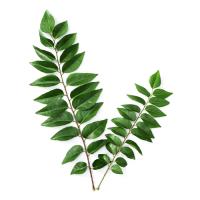Product Specification
| Spride Exports |
Product Descriptions
Also called cilantro, Chinese parsley. an herb, Coriandrum sativum, of the parsley family, native to Europe, having strong-scented leaves used in cooking and aromatic seeds used as a seasoning and in medicine.
Coriander lowers bad cholesterol (LDL) and increases the levels of good cholesterol (HDL).A very good food for digestive system, coriander promotes liver functions and bowel movements.Coriander is good for diabetes patients. It can stimulate the insulin secretion and lower the blood sugar levels.
Vitamin K in it is good for the treatment of Alzheimer's disease.The fat soluble vitamin and antioxidant- Vitamin A, protects from lung and cavity cancers.Coriander contains anti-inflammatory properties. This is why it is good against inflammatory diseases such as arthritis.Coriander's anti-septic properties help to cure mouth ulcer.
The origin of the cultivated species Coriandrum sativum is still not clear, and no certain information about the wild species exists. Nevertheless, several authors have named coriander as a wild plant. Linnaeus reported as long ago as 1780 that coriander also occurs as a weed in cereals. Alefeld (1866) mentioned that coriander was a common weed spread from southeastern Europe to southern Russia. Stoletova (1930) also reports on wild coriander from Armenia.
When considering the origin of this plant, another approach is to look for evidence of its cultivation in ancient times, using either archaeological or linguistic methods. Coriander is named in an Egyptian papyrus dating from 1550 BC that lists medicinal plants (van Harten 1974). Sinskaja (1969) even reports ancient Egyptian notes on coriander dating back to the time of the 5th dynasty, i.e. to 2500 BC. Coriander fruits were found in the tomb of Tutankhamun, and were common in other graves in ancient Egypt at that time (Germer 1989).The library of the Assyrian king Ashurbanipal of the 7th century BC also contains documents referring to the cultivation of coriander (van Harten 1974).




 Safe and secure payments using Abraa safe trade systems
Safe and secure payments using Abraa safe trade systems  \
\









